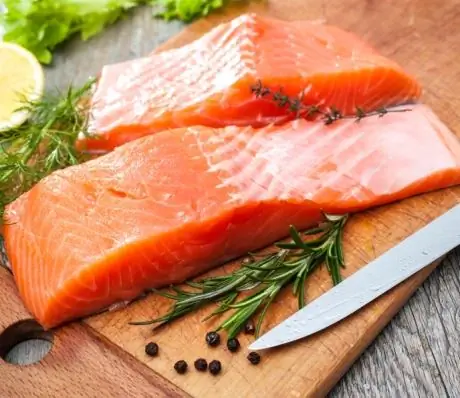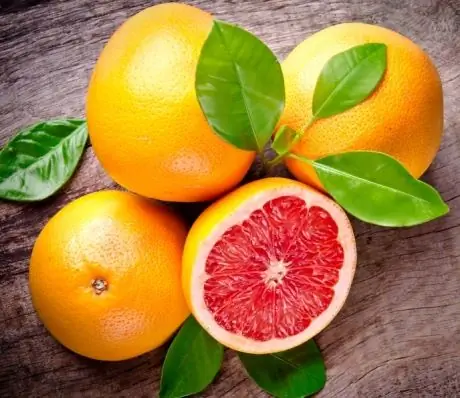- Author Rachel Wainwright [email protected].
- Public 2023-12-15 07:39.
- Last modified 2025-11-02 20:14.
Hydrastis
Instructions for use:
- 1. Chemical composition
- 2. Useful properties
- 3. Indications for use
- 4. Contraindications
- 5. Home remedies

Hydrastis is a perennial herbaceous bushy plant of the Buttercup family (synonyms: yellow root, canadian hydrastis, golden root, canadian yellow root). A low (up to 30 cm) simple erect stem, three similar leaves - a rapidly disappearing basal leaf and two contiguous, finger-dissected, having a heart-shaped base and serrated edges of the stem leaf. An extensive underground horizontal rhizome with numerous thin adventitious roots is painted in an intense yellow color. The flowers are solitary white-green-pinkish, the fruit is a fleshy red berry, resembling a raspberry, with black shiny seeds. Hydrastis blooms from the beginning of May, the fruits ripen by July.
The natural area of the plant is the eastern part of North America, but due to its valuable pharmaceutical qualities, it is widely cultivated in the world, including in many regions of Russia.
Chemical composition
The chemical composition of the plant: isoquinoline alkaloids (hydrastine, berberine, canadine), macro- and microelements (potassium, calcium, magnesium, phosphorus, cobalt, copper, aluminum, iron, silicon), vitamins C, A, B, E, inositol (vitamin B 8), bitterness, starch, essential oils, and other useful components.
Nutritional balance of yellow root: carbohydrates - 80%, proteins - 11%, fats - 2%, including dietary fiber - 12%.
Beneficial features
As a medicinal raw material, the rhizomes of the plant are used, which are dug up in the fall, in the third year after planting. Hydrastis Canadian in folk medicine and homeopathy is used due to the following healing properties: antimicrobial, astringent, choleretic and slightly laxative, increasing blood pressure, immunostimulating (significantly increases the level of immunoglobulins in the blood), strong tonic, anti-catarrhal, and also reducing swelling and bites insects.
Hydrastis is considered one of the best natural antibiotics. The rhizome of this medicinal plant is included in the British Herbal Pharmacopoeia.
Indications for use
- diseases of the stomach, gallbladder, inflammation of the colon, mucous colitis, gastroenteritis;
- flu and other viral diseases;
- reduced immunity (as an immunostimulant);
- chronic catarrh, bronchitis, laryngitis, pharyngitis;
- menstrual irregularities (for regulation), menopause, vaginal discharge;
- labor activity (as a stimulant);
- inflammation of various origins;
- internal bleeding;
- liver dysfunction.
Contraindications
Medicines from canadian hydrastis are contraindicated in pregnancy (cause an increased contraction of the walls of the uterus), during breastfeeding, with hypertension and in case of individual intolerance to the substances contained in its composition.
Since the plant contains alkaloids that have a strong physiological effect, it should be used with caution, under the supervision of a physician.
Long-term use of yellow root products can cause indigestion and constipation.
Home remedies from hydrastis
- alcohol tincture: pour 10 g of roots with 100 ml of vodka, leave in a sealed container for 2 weeks, filter. Take 10 drops 3 times a day for colitis and colitis; with heavy menstruation and constipation, 20 drops per 100 ml of water 2 times a day (morning and evening); tincture, diluted in 100 ml of distilled water, for skin diseases is used to lubricate the affected areas, for infections of the genital organs - for douching; for the therapy of conjunctivitis, 10 drops of tincture are diluted in 100 ml of distilled water and instilled with the resulting solution of the eye;
- decoction (for the treatment of warts): brew 10 g of roots with 1 glass of boiling water, cook over low heat for 10 minutes, cool. The resulting tool lubricate warts daily.
Information about the drug is generalized, provided for informational purposes only and does not replace the official instructions. Self-medication is hazardous to health!






